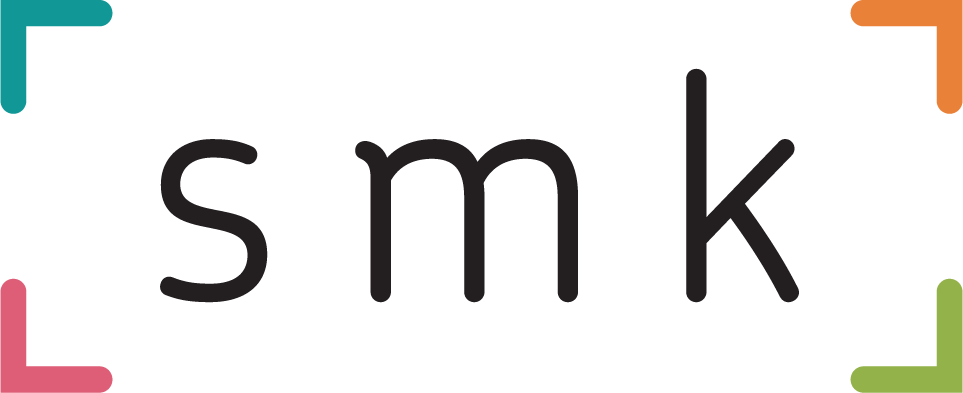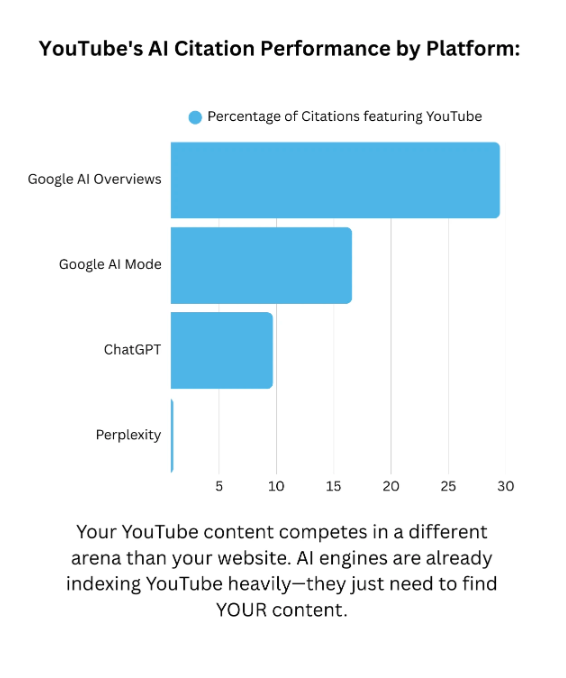YouTube may be one of the best-kept secrets for unlocking AI search visibility. As generative AI reshapes how users discover and consume information, new data from BrightEdge reveals that YouTube is not just part of the mix, it’s leading it by an extraordinary margin.
BrightEdge’s latest research shows YouTube is cited in AI-generated results 200 times more often than any other video platform. TikTok, Vimeo, and Twitch barely register. Even on platforms with no Google affiliation, like ChatGPT and Perplexity, YouTube remains the go-to source for video citations.
This isn’t just a content trend. It’s a strategic insight. Brands looking to remain discoverable in the age of AI need to treat YouTube as a core part of their search strategy, not just a video dumping ground, but a critical signal of authority in AI-driven environments.
YouTube’s Unmatched Lead in AI Citations
BrightEdge’s latest study, conducted via its AI Catalyst platform, analysed citation patterns across Google AI Overviews, Google AI Mode, ChatGPT, and Perplexity between May 2024 and September 2025. The data shows YouTube appearing in 20% of AI search citations on average, with Google’s own AI Overviews citing it in nearly 30% of all responses. That makes YouTube the number one domain cited across AI platforms, surpassing even trusted informational sources like the Mayo Clinic and Investopedia.
Even non-Google AI tools such as ChatGPT and Perplexity heavily favour YouTube. Despite having no incentive to prioritise Google-owned properties, both platforms still draw on YouTube content almost exclusively when it comes to video citations. Vimeo and TikTok? Each accounts for just 0.1% of AI citations. Twitch and Dailymotion are statistically irrelevant.
What AI Is Looking For on YouTube
AI search engines aren’t citing video content at random. They’re pulling in videos that directly answer user prompts, especially when visuals improve comprehension. The top-performing video formats include:
-
Product demos and walkthroughs
-
How-to tutorials (e.g. “How do I regrip my golf club?”)
-
User reviews and comparisons
-
Educational content with practical applications
-
Time-sensitive updates
In contrast, YouTube videos focused on abstract ideas, career advice, or purely conceptual discussions are less likely to be cited. If your channel has a strong library of instructional content, you may already have what AI engines want—you just need to make it easier to find.
SEO Is No Longer Just About Web Pages
SEO has traditionally been anchored in optimising websites, building keyword-rich landing pages, crafting well-structured blog posts, securing backlinks, and monitoring technical performance. For the past two decades, the objective has been straightforward: rank highly in Google’s organic results and capture user intent at the moment of search.
However, the emergence of generative AI in search is fundamentally changing that dynamic. AI-powered engines such as Google’s AI Overviews, ChatGPT, and Perplexity are no longer restricted to crawling and ranking web pages. Instead, they are synthesising information from a much broader range of content types, including video, podcasts, PDFs, community forums, and structured data feeds.
Brand discovery is no longer confined to the web. AI search tools are drawing from non-traditional environments to provide richer and more varied responses. This represents a major departure from classic SEO thinking—and a significant opportunity for brands that are prepared.
Where Google’s blue links once dominated, we now see summarised answers, embedded videos, and cited sources across multiple content formats. YouTube is the most visible winner in this shift, but it’s not the only one. Other platforms such as LinkedIn, Reddit, GitHub, and Quora are also emerging as valuable citation sources, depending on the query.
To remain visible, marketers must move beyond web-only optimisation and consider how their brand appears across a broader content ecosystem.
A New AI Search Strategy for YouTube
If AI engines are evaluating content across formats, your YouTube channel becomes far more than a video archive. It is a discoverability asset.
Here’s a practical playbook to optimise for AI-powered visibility:
1. Audit Your Existing YouTube Library
Review your current videos to identify AI-relevant formats: tutorials, walkthroughs, product explainers, and time-sensitive updates. Many brands already have this content—they just haven’t optimised it for AI discovery.
2. Optimise for Prompt-Based Discovery
Update titles and descriptions to reflect real user queries. Use language that mirrors how prompts are phrased. Add detailed timestamps so AI tools can reference specific video segments in their responses.
3. Track YouTube as a Citation Source
Start monitoring your YouTube performance not just for views and engagement, but as a citation channel. Tools like BrightEdge’s AI Catalyst can help track which videos are appearing in AI responses and how their citation rates are trending over time.
4. Identify Opportunity Segments by Prompt Type
Use AI citation tools to identify which market segments rely most heavily on YouTube. Explore the exact videos being cited and the purposes they serve—whether it’s visual education, product comparison, or how-to support. This insight can directly inform future content planning.
5. Reframe SEO Around AI Visibility
Ask a new question: “How does our brand surface in AI responses?” Sometimes the answer will still be a well-ranked webpage. Increasingly though, it may be a cited video, a LinkedIn post, or even user-generated content from a trusted platform.




RECOMMENDED FOR YOU
Meta Adds New AI Tools To Supercharge Lead Gen
Meta is rolling out a wave of updates to…
Meta is rolling out a wave of updates to…
Meta Announces Business AIs For Brand Websites
Meta is moving further into the AI assistant space…
Meta is moving further into the AI assistant space…
ChatGPT Data Reveals New Search Behaviour
ChatGPT is not just answering questions; it is searching…
ChatGPT is not just answering questions; it is searching…